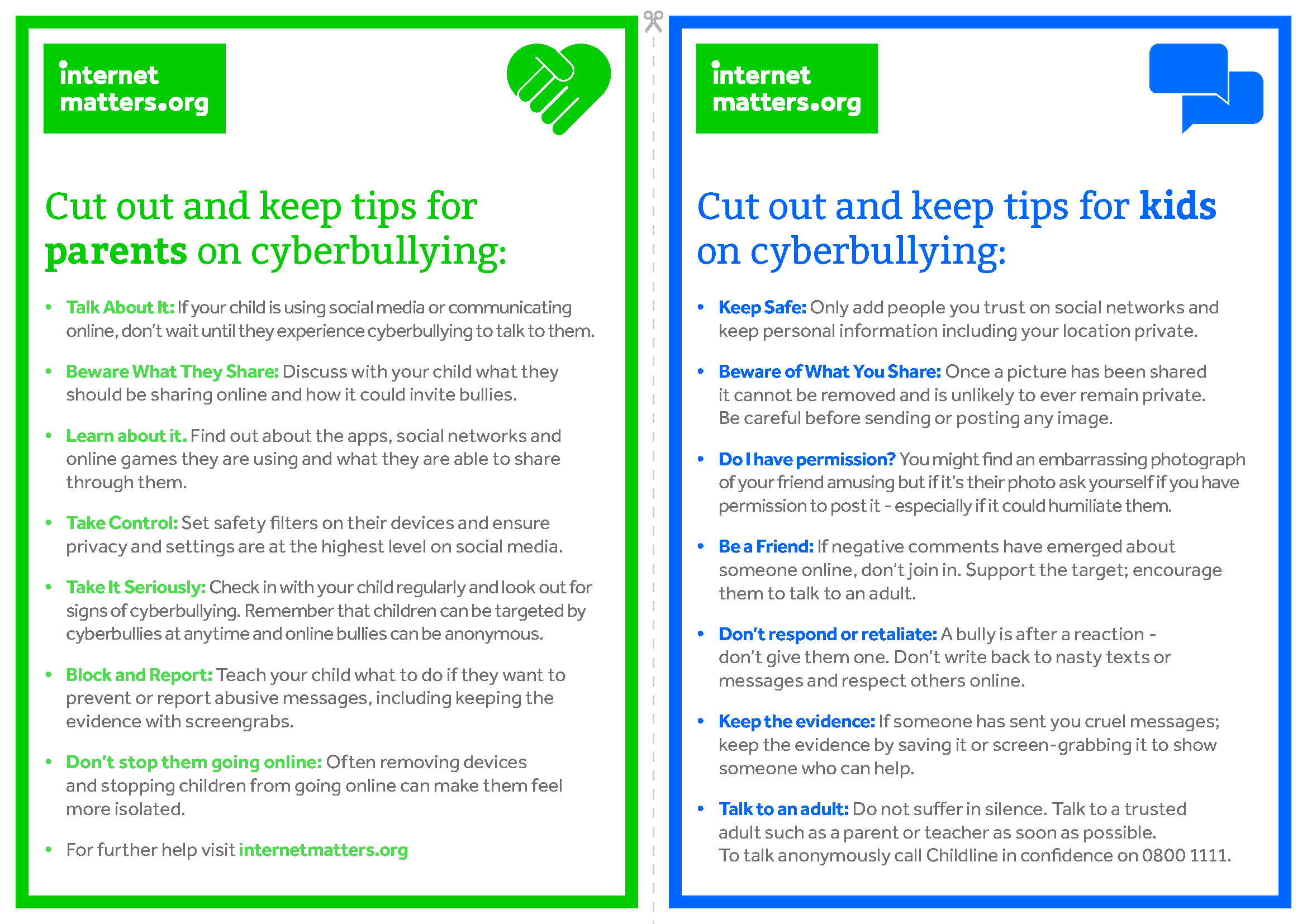"You never look good trying to make someone else look bad."
What is cyberbullying?
From StopBullying.gov, Cyberbullying is bullying that takes place over digital devices like cell phones, computers, and tablets. Cyberbullying can occur through SMS, Text, and apps, or on social media. It can also occur in online forums or gaming where people can view, participate in, or share content.
Cyberbullying includes sending, posting, or sharing negative, harmful, false, or mean content about someone else. It can include sharing personal or private information about someone else causing embarrassment or humiliation.
Cyberbullying has unique concerns in that it can be:
- Persistent – Digital devices offer an ability to immediately and continuously communicate 24 hours a day, so it can be difficult for children experiencing cyberbullying to find relief.
- Permanent – Most information communicated electronically is permanent and public, if not reported and removed. A negative online reputation, including for those who bully, can impact college admissions, employment, and other areas of life.
- Hard to Notice – Because teachers and parents may not overhear or see cyberbullying taking place, it is harder to recognize.
Video
5 Ways to Stop Cyberbullying
Articles
- "It's not Cyberbullying, but..." - how to help your child deal with online ghosting, subtweeting, griefing, hate speech and more
- How to block and report cyberbullies on: Instagram, Snapchat, and TikTok
- "11 Social Media Red Flags Parents Should Know About" - the most common social media red flags, the apps they're found in, and tips for dealing with them
- "What's Airdrop and why is my kid using it?" - how to share even when they're not online
- "Parents’ Guide to Cyberbullying" - overview of cyberbullying and tactics to deal with it
BCSS Policy on Bullying
The Barrow County School System policy on bullying can be found in the Student Code of Conduct. Bullying is defined as an act that is:
- Any willful attempt or threat to inflict injury on another person, when accompanied by an apparent present ability to do so;
- Any intentional display of force such as would give the victim reason to fear or expect immediate bodily harm; or
- Any intentional written, verbal, or physical act, which a reasonable person would perceive as being intended to threaten, harass, or intimidate, that:
- a. Causes another person substantial physical harm within the meaning of Code Section 16-5-23.1 or visible bodily harm as such term is defined in Code Section 16-5-23.1;
- b. Has the effect of substantially interfering with a student's education;
- c. Is so severe, persistent, or pervasive that it creates an intimidating or threatening educational environment; or
- d. Has the effect of substantially disrupting the orderly operation of the school.
The term applies to acts which occur on school property, on school vehicles, at designated school bus stops, or at school related functions or activities or by use of data or software that is accessed through a computer, computer system, computer network, or other electronic technology of a local school system.
The term also applies to acts of cyberbullying which occur through the use of electronic communication, whether or not electronic act originated on school property or with school equipment, if the electronic communication
- is directed specifically at students or school personnel,
- is maliciously intended for the purpose of threatening the safety of those specified or substantially disrupting the orderly operation of the school, and
- creates a reasonable fear of harm to the students' or school personnel's person or property or has a high likelihood of succeeding in that purpose.
Electronic communication includes, but is not limited to, any transfer of signs, signals, writings, images, sounds, data or intelligence of any nature transmitted in whole or in part by a wire, radio, electromagnetic, photo electronic or photo optical system.
This site provides information using PDF, visit this link to download the Adobe Acrobat Reader DC software.

.png)

